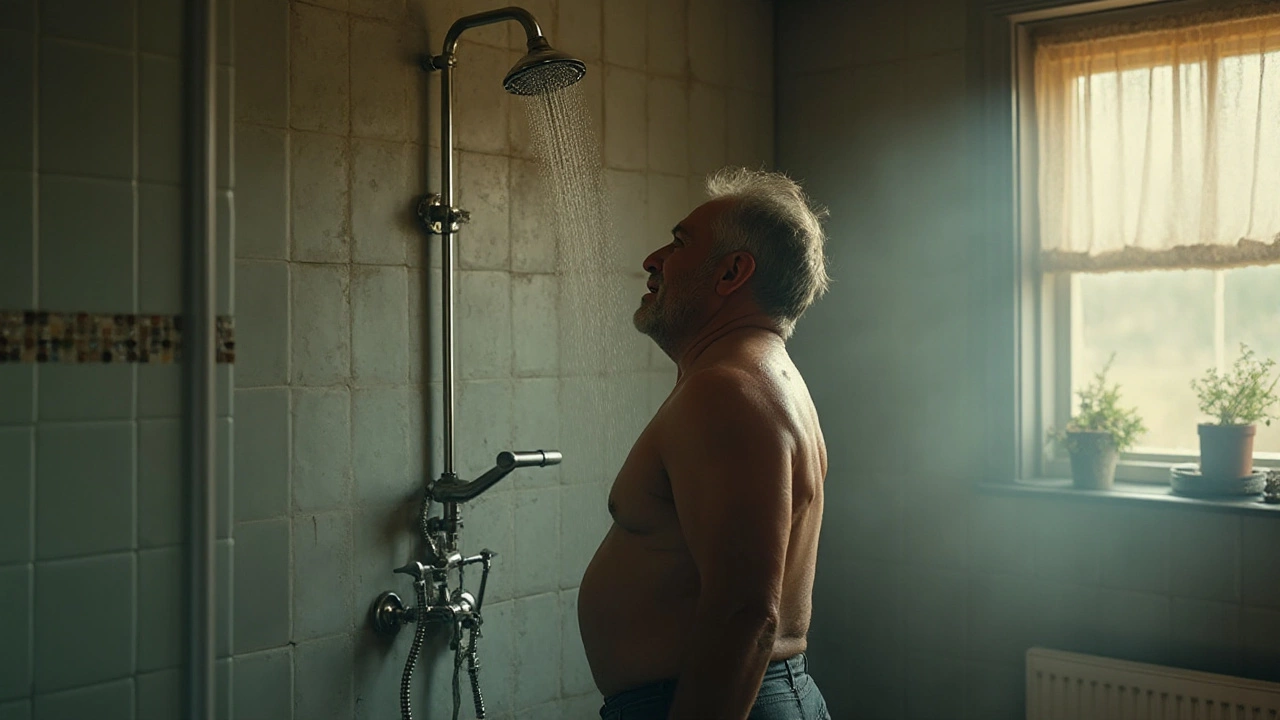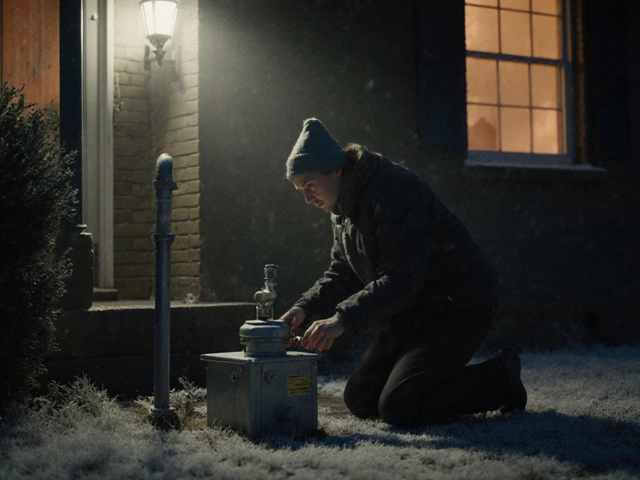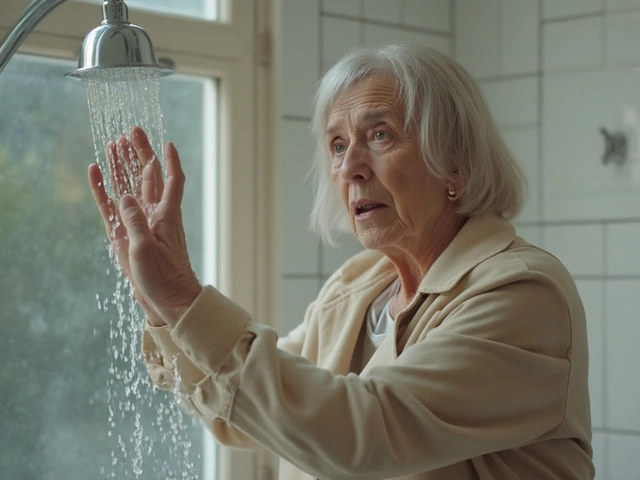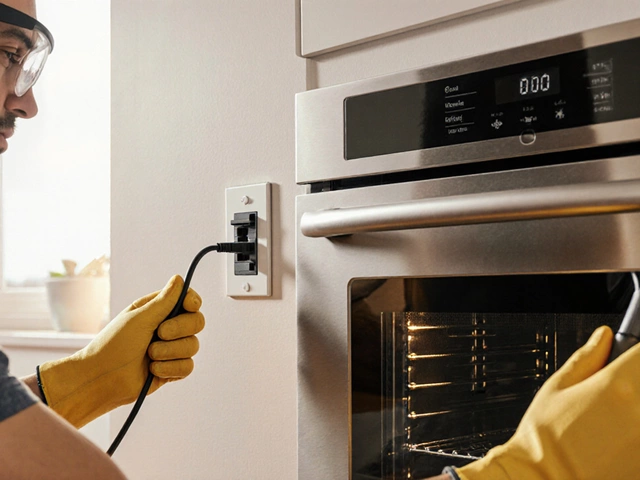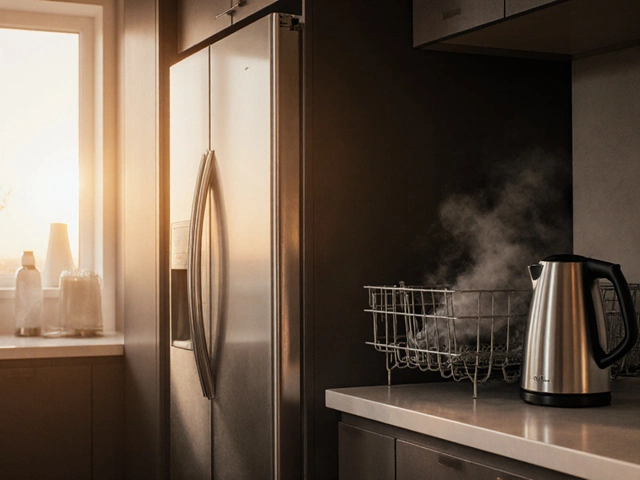Nothing's quite as frustrating as expecting the warm embrace of a hot shower only to be greeted with a shock of chilly water. It’s a dilemma many have faced, and while it’s tempting to think you’ve offended some household spirit, the problem is usually more down to earth. Understanding what can turn your water from toasty to Arctic is often the first step to solving it.
Whether you're dealing with an ornery pilot light or a grumpy thermostat, knowing the root causes of this issue is essential. A bit of knowledge can go a long way in fixing things yourself or explaining the problem when calling in a professional. Dive in as we break down what could be keeping your water heater from doing its job. After this, you might find the problem less daunting than it seems.
- Understanding Your Water Heater
- Common Causes of No Hot Water
- Pilot Light Problems
- Thermostat and Element Malfunctions
- Troubleshooting Tips
- When to Call a Professional
Understanding Your Water Heater
Water heaters are silent workhorses in our homes, often tucked away and only scrutinized when the comfort of hot water is suddenly snatched away. At its core, a water heater is a device that transfers heat to the water through various means, so you can enjoy a hot shower, a clean dish, or a warm bath. There are several types of water heaters, but the most common are tankless and traditional storage water heaters. Knowing which type you have and how it operates can help you diagnose problems when they arise and decide the course of action needed.
Traditional storage water heaters are quite straightforward in their construction and operation. They consist of an insulated tank where water is heated and stored until needed. These heaters use a thermostat to regulate the water temperature, ensuring it stays within a preset range. Tankless water heaters, on the other hand, heat water on demand and are often more energy-efficient as they don't have to keep water hot at all times. An interesting fact pointed out by the U.S. Department of Energy is that tankless water heaters can be 24-34% more energy-efficient for homes that use about 41 gallons of hot water daily.
Whatever type of heater you have, understanding the basics can help you take care of them effectively. Components like heating elements, pilot lights, and thermocouples play vital roles in the water heating process. In gas water heaters, the pilot light ignites the burner, which then heats the water. If the pilot light goes out, it can lead to what you experience as no hot water. Electric water heaters, on the other hand, rely on heating elements inside the tank to raise the water temperature. A malfunction in these components often leads to cold surprises, and knowing how to check them can save you a lot of hassle.
Let’s not forget about the importance of regular maintenance. Routine checks and timely maintenance can extend the life of your water heater and ensure it performs optimally. Tasks such as checking for leaks, flushing the tank to remove sediment build-up, and inspecting the anode rod can prevent many common issues that lead to failure. According to Consumer Reports, it’s advisable to flush your tank annually to keep your water heater in tip-top shape. Plumbing expert John Smith states,
"Maintenance is key; a little upkeep goes a long way in maintaining your water heater's efficiency and longevity."
Finally, locating the thermostat and learning how to adjust it can prevent potential scalding and save on energy bills. Many homeowners keep their thermostats set too high, unaware that the default 140°F setting can be reduced to 120°F without any significant loss of comfort. This simple change can reduce water heating costs by 10% or more, according to energy savers tips provided by multiple energy authorities. With this information in hand, understanding the intricacies of your water heater isn't as daunting as it might seem, and armed with the right knowledge, you're well on your way to troubleshoot issues as they arise.
Common Causes of No Hot Water
Experiencing a sudden lack of hot water can throw a wrench in your daily routine, transforming mundane tasks like showering or washing dishes into challenging undertakings. The first step in tackling the issue is understanding the typical culprits that interrupt the steady flow of hot water. Many of these issues stem from the water heater itself, and recognizing the signs early can save both time and money.
One of the most frequently encountered issues is a malfunctioning pilot light. For those with gas water heaters, the pilot light serves as the ignition source to heat the water. If it goes out, the water heater cannot ignite the burner, resulting in tepid or cold water. Checking if the pilot light has gone out is a critical first step – it’s a simple fix for those comfortable relighting it themselves. Instructions are often found on your water heater’s panel, but always ensure you follow safety guidelines to avoid accidents.
Electric water heaters, on the other hand, don't have pilot lights but can fall victim to faulty thermostats and heating elements. The thermostat is responsible for regulating the water's temperature, and if it fails, your water heater could struggle to maintain heat. Similarly, heating elements can deteriorate over time due to corrosion or mineral buildup, particularly in areas with hard water. Diagnosing a problem with either component typically requires a multimeter to check for electrical continuity. A lack of continuity often means the part needs replacing.
In addition to these mechanical issues, external factors can also contribute to a lack of hot water. If the water heater is undersized for the household's needs, it might simply be unable to keep up with demand, especially in homes with multiple residents or during particularly busy periods. An easy tell is when hot water runs out quickly during peak usage times but returns after a short period of non-use. Upgrading to a larger unit or staggering hot water usage might solve the problem.
"Regular maintenance could increase the efficiency of your water heater by up to 25%," suggests the U.S. Department of Energy. Neglecting such maintenance can lead to sediment buildup in the tank, which not only reduces efficiency but can also cause the metal to rust and eventually fail.
Sediment can accumulate in any water heater over time, but it's a more pressing issue where water has high mineral content. This sediment forms a barrier between the burner and the water, making it harder for the heater to do its job. Flushing your water heater once a year is a good practice to keep this buildup at bay, though some areas may necessitate more frequent cleaning.
Neglecting the heater can also cause an indirect problem: pressure relief valve issues. All water heaters have a temperature and pressure relief valve, a safety device that releases pressure if it becomes too high within the tank. If this valve becomes disabled or blocked, the system might shut down as a preventive measure, resulting in cold water. Regular inspections can prevent these occurrences, ensuring your water heater functions properly throughout its life.
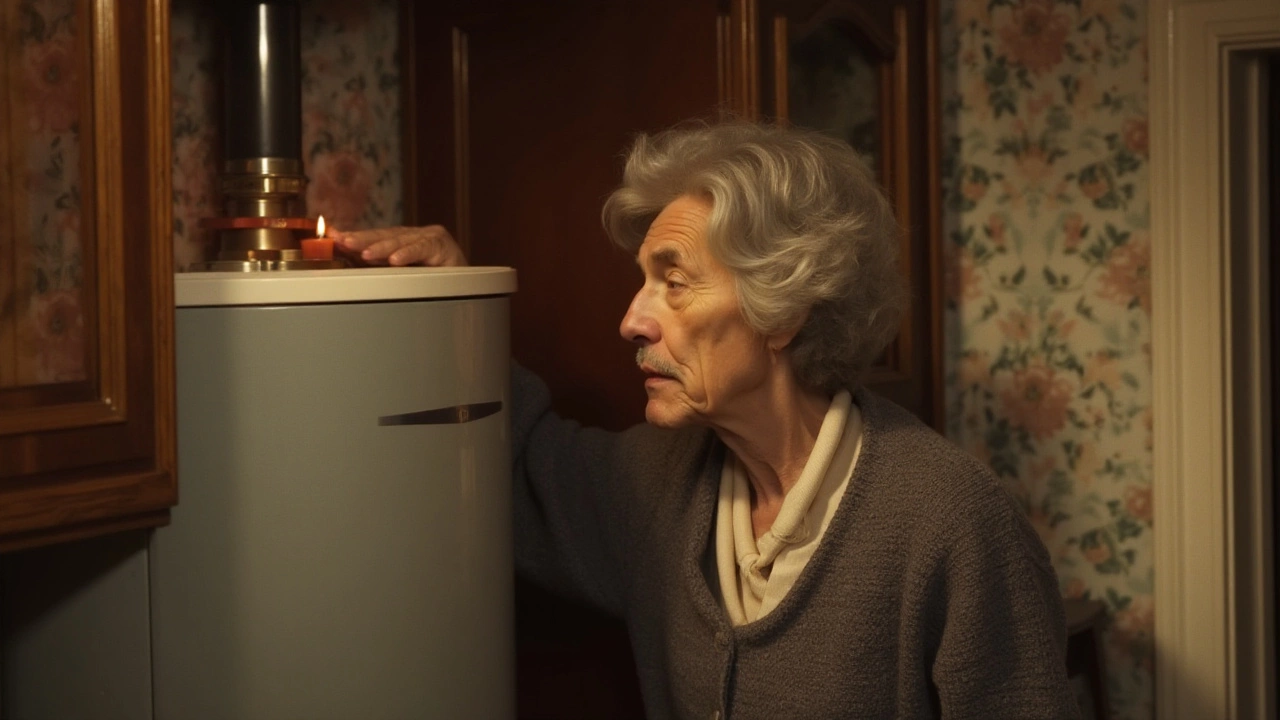
Pilot Light Problems
The humble pilot light might be small, but it plays a crucial role in ensuring your water heater keeps things toasty. When you suddenly find yourself with no hot water, a weak or extinguished pilot light is often the culprit. The pilot light ignites the gas burner, which in turn heats the water in your tank. If it goes out, the entire heating process comes to a standstill. But why does it falter?
There are several potential reasons behind pilot light issues. First, let's consider drafts. If your water heater is located in a drafty area, wind could be blowing directly onto the pilot light. Although most modern water heaters are equipped with shields, strong drafts can still affect them. Additionally, a dirty or clogged pilot orifice can stop the fuel supply — visualize it as a tiny nozzle needing a good clean. Regular maintenance can help avoid such blockages.
Another common issue is a defective thermocouple. This is a sensor that ensures the gas valve only remains open when the pilot light is lit. It's a safety feature that prevents gas leaks. If this component fails, it mistakenly believes the pilot light is out and cuts off the fuel. This crucial part may get bent out of shape over time, so it needs to be positioned directly in the pilot light's flame. It's a relatively straightforward fix but might require the expertise of a professional.
Sometimes, the issue might be as simple as an air bubble in the gas line, which interrupts the fuel flow to the pilot light. This can often be sorted by relighting the pilot light a few times. However, you should always follow the manufacturer's instructions when doing this, ensuring safety precautions are in place.
"Understanding why your pilot light keeps going out can save you a ton of hassle and maybe even a few dollars," explains HVAC professional Mark Thorne. "Sometimes the solution is as easy as moving a draft shield or cleaning a component."
For those with water heater repair skills, replacing the thermocouple is an option to explore if the other solutions do not resolve the problem. It's slightly more complex but can be a weekend project with the right tools and guidance. Regularly having your heater serviced by a professional can also prevent such issues. While it might seem like just another day when the pilot light heads south, know that with a little attention, you're often back in hot water swiftly!
Thermostat and Element Malfunctions
If you've navigated the labyrinth of water heater woes, you might have stumbled upon the thermostat or heating elements as potential culprits. The thermostat in your water heater is akin to the brain, orchestrating the precise temperature of the hot water circulating through your home. When it loses its precision, what should be a soothing temperature may swing wildly, leaving you without the hot water oasis you expected. One common issue is a thermostat that refuses to heat beyond lukewarm. It might be misreading the water temperature, delivering deceptive signals that cut the heating short.
Then there’s the heating element, the true muscle behind warming your water. Over time, elements can burn out, just like a lightbulb does, especially with the added stress of mineral build-up. Imagine trying to heat your home with a burnt-out light bulb – it just won’t happen. When the element gives up the ghost, the result can range from tepid water to none at all. It’s worth knowing that a tank heater typically houses two heating elements – upper and lower – which means if one falters, the other may continue sporadically, though inadequately, warming the water.
An interesting fact is that about 80% of water heater malfunctions relate directly to these thermostatic and elemental failures. A faulty thermostat can sometimes cause the element to overheat, leading to what’s affectionately known in plumbing circles as a 'dry fire'. This is when the element burns out because it wasn’t submerged in water. As a safeguard, modern heaters often shut down if the thermostat starts spewing out faulty commands, but older models are less forgiving.
"It's important to remember, your water heater's thermostat and elements are finely tuned to consistently operate under water pressure," explains Jerry Miller, a reputable HVAC expert. "Anything that disturbs this balance can spell trouble, meaning regular check-ups are essential."
So, what can you do when you suspect thermostat or element issues? First, think safety. Always turn off the power supply to the heater before any inspection – water and electricity are a hazardous pair. Then, it might be useful to know basic troubleshooting steps. Start by checking your heater’s circuit breaker in the home’s electrical panel – it could have tripped, cutting electricity to the heater. If resetting it doesn’t fix things, the heater’s thermostat might need adjustment or be replaced altogether.
If you feel technically inclined, a continuity tester or multimeter can help diagnose whether an element has failed. By testing the terminals on each element, one can determine functionality – a decent reading means the element works, whereas a zero reading indicates it doesn’t. However, as not everyone is comfortable wielding a multimeter, it may be practical to secure professional help. Much like visiting a doctor for peace of mind when symptoms persist, a professional plumber can offer a more comprehensive diagnosis and solution.

Troubleshooting Tips
When your home is void of hot water, it’s easy to plunge into a state of inconvenience. Before throwing in the towel and calling a professional, there are some water heater troubleshooting tactics that can help you zero in on the issue. Because many of these systems show visible signs of where the problem lies, a bit of investigation can be enlightening and even empowering.
The first place to start is the thermostat. If your shower's temperatures are inconsistent, it might be a simple matter of adjusting the settings. For electric water heaters, there are often two thermostats, one for each heating element. A mismatch in the temperature settings can cause your hot water woes. Correcting this could simply mean synchronizing both thermostats according to the manufacturer's guidelines.
Next, check the power supply. For electric heaters, verify that a fuse hasn’t blown or a breaker hasn’t tripped. A look at your main power supply could reveal such an issue. In gas heaters, inspect the pilot light. A draft or lack of proper ventilation might have snuffed it out, causing the water heater to stop functioning effectively. Relighting instructions are usually found on the heater itself, but if in doubt, online resources can guide you through the process.
Another common issue could be sediment buildup. Over time, minerals can accumulate at the bottom of the tank, creating an insulating layer that prevents heat transfer. Water heater repair guides typically suggest draining a few gallons from the tank every six months to avoid this issue. Attached to the water heater, you’ll find a drain valve designed for this kind of maintenance task. Opening the valve and allowing a mixture of hot water and sediment to release can help restore efficiency.
Regular inspection of the anode rod is a helpful practice, too. This sacrificial part corrodes slowly to protect the metal lining of the tank. Once eaten away, the rod must be replaced to prevent the tank from rusting prematurely. According to water heater manufacturers, checking this rod every year can help extend the life of your tank significantly.
Citing industry professionals, "Replacing the anode rod can save your water heater from untimely death," which is a task that needs minimal tools and can usually be done within an hour.
For the technologically inclined, smart thermostats or monitoring devices can be an asset. They help you keep an eye on temperature settings and alert you to potential issues. These devices can often be connected to your home Wi-Fi, making it easy to manage water temperature remotely and receive warnings about energy consumption spikes or faults.
One final tip is to always listen and look for warning signs. Unusual noises, such as popping or hissing, can indicate areas that need attention. Similarly, pooling water around the heater could be a sign of a valve problem or a more serious leak that needs fixing. Being proactive about maintenance and aware of these symptoms keeps your heater running smoothly.
While some issues clearly need expert intervention, a structured DIY approach can fix many basic problems. Knowing your unit and following these troubleshooting tips won't just assist in resolving hot water issues but will also enhance your understanding of how these vital systems work.
When to Call a Professional
There comes a time in every homeowner's life where DIY troubleshooting hits a wall. It's the moment when your intuition tells you that this might be a little out of your depth. Knowing when to call a professional for your water heater repair can save you not only time and frustration but also potentially prevent further damage to the system. One of the most compelling reasons to call an expert is when you’ve checked the common issues — like the pilot light and thermostat — but nothing seems out of place, yet there's still no hot water.
Another scenario where calling in the cavalry is wise involves leaks. If you notice water pooling around your heater or if the unit is making unusual noises, this could indicate a more severe issue like a tank leak or internal component failure. Water heaters are complex devices, and sometimes signs that might seem minor — like unusual sounds — are signals of impending major problems. A seasoned technician has the expertise to diagnose underlying issues that aren't visible or detectable by a layperson with cursory knowledge.
According to the U.S. Department of Energy, it's estimated that 'water heating can account for about 14% to 18% of a home’s utility bills.' Ensuring that your heater operates efficiently can lead to significant savings and prevent costs from spiraling out of control.
It’s also important to bring in professionals when dealing with electrical components. Electric water heaters involve high-voltage connections, and tinkering without the proper tools or knowledge can be not only damaging to the heater but downright dangerous. DIY electrical repairs pose risks of shock or fire if done incorrectly. Not just that, fixing it yourself might void any existing warranties — always a bummer if something goes awry later on.
Consider Cost Versus Value
If your heater is nearing the end of its life span — typically around 10-15 years, it's essential to weigh the costs of repair against the potential for replacement. Repeatedly patching up an aging unit might seem cheaper at first, but the costs add up, and the inconvenience of intermittent failures can be frustrating. Professionals can provide valuable insights and estimates, helping you decide whether now might be the right time to invest in a new water heater model, potentially a more energy-efficient one to keep those utility bills in check.In some states or localities, different regulatory codes for plumbing and HVAC systems need to be adhered to, which you might not be aware of. Certified technicians are usually well-versed in these requirements and can ensure that repairs meet these standards, helping you avoid any legal or safety issues down the road. They bring not just technical skills but also peace of mind, which is invaluable when dealing with the essential service of maintaining your home’s comfort.

